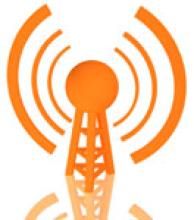
Fast, affordable Internet access for all.

We know about a USDA program meant to bring broadband to rural America. Our information is that most of the money has gone to suburban communities in Texas, and we don’t have a professional grant administrator to chase down any money that might be left. We’re aware that the Massachusetts governor just signed a $40 million act establishing the Massachusetts Broadband Institute, to figure out how to bring broadband to unserved and underserved towns. We’re also aware that the money will go to vendors to develop regional systems and we don’t have the patience to wait the two or three years it will take for anyone to get around to thinking about maybe serving us.Ultimately, the City was able to lend itself the money:
As it has turned out, we didn’t need to borrow — town financial officers found the funds without going to the bank for them. We got the necessary permits from the owners of two towers here, bought the equipment, got a couple of people trained to install the equipment, and turned on our first customers in March, 2009.Between a local mountain and available cell tower, the topology apparently fits a fixed-wireless approach (at least for a significant part of the population).
Federal broadband stimulus funding is a once-in-a-lifetime opportunity for local nonprofit organizations -- especially community media centers -- to become Internet service providers (ISP) and begin developing new revenue streams. It's also an historic opportunity for advocates of Internet Freedom. Creating community-based broadband networks would be a huge step toward creating the critical "third pipe" alternative to the cable/telco duopoly. The proliferation of these community-based networks would generate market pressure to force the major carriers to restore “net neutrality” protections for broadband users. In short, this broadband stimulus opportunity opens the door to the possibility of a new “Jeffersonian Internet” comprised of a “network-of-grassroots-networks” where civil liberties and quality journalism are valued over Wall Street business models. "Local Network Cookbook: A Recipe for Launching a Local Broadband Wireless Network" is aimed at helping nonprofit organizations -- especially those already using digital technologies -- move quickly to plan and submit a broadband stimulus funding proposal for one of the three application windows.
But it's clear that the new network won't be held hostage to Telstra's demands. The consultants conclude that, in the absence of an agreement, [the fiber network] should proceed to build both its access network and its backhaul unilaterally." [src: Ars Technica]Between the original plan and a revised plan suggested by the referenced study (bullet points here), over 90% of Australians will have a real choice in providers over a FTTH connection whereas the rest will have a combination of wireless and satellite options. The prices are expected to be affordable, and will probably be well below what we pay here in America. The Implementation Study has some words about ownership of the National Broadband Network (NBN):
Government should retain full ownership of the NBN until the roll out is complete to ensure that its policy objectives are met – including its competition objectivesOn technology, they reiterate what we have been saying for years:
Fibre to the premise is widely accepted as the optimal future proof technology with wireless broadband a complementary rather than a substitute technology;Have no fear though, we will undoubtedly hear from many apologists for the private telecom companies that Australiai's NBN has "failed" because it is losing money. Estimates on the break even are many years out:
BN Co can build a strong and financially viable business case with the Study estimating it will be earnings positive by year six and able to pay significant distributions on its equity following completion of the rollout;Brace yourself for a slew of reports noting the operating losses in the early years as "proof" the government should never have built this broadband infrastructure.

Download Breaking the Broadband Monopoly [pdf]
"They are potentially looking at helmet cams," Doug Paris said, assistant to the city manager. "Those who are sitting outside (the structure) will be able to see what's going on inside."It would make little sense for the fireman to have wires coming out of their helmets. But that wireless signal from the helmet probably won't propagate to the fire hall or police station. Instead, a wireless access point near the fire can grab the signal and make it available to anyone who needs access to it.
I, a Cablevision customer, can now use all of Time Warner’s and Comcast’s hot spots in these three states. If you have Time Warner’s Road Runner service at home, you’re now welcome to hop onto Cablevision’s Optimum hot spots wherever you find them, or Comcast’s Xfinity hot spots. And so on. It’s as though all three companies have merged for the purpose of accommodating your Wi-Fi gadget, hugely multiplying the number of hot spots that are available to you. The companies call this kind of partnership “the first of many.” Now, I think this development is fantastic. It hits me where I live. It’s free. It’s fast and reliable. I love it.He goes on to ask, what's in it for them? Apparently, David Pogue has little understanding of how dominant firms work together to cement their power and limit competition. He then put up a post with an answer from an insider:
“David, widely available WiFi makes our service better, and more useful and valuable,” he wrote. “And we don’t compete directly with TWC or Comcast for high-speed Internet customers; we compete with phone companies that offer a wide array of services, including data plans over increasingly over-burdened and sluggish cellular networks for an extra $60 per month."Bingo. Big cable companies do not compete with each other - one suspects these companies have tacitly divided the national cable market with an understanding that they will not overbuild each other. The barriers to entering the cable/broadband market are already substantial: any new network requires a massive upfront capital expenditure. This Wi-Fi partnership with cable incumbents makes that barrier even larger. Let's imagine that a city wants to build a publicly owned network that will compete with one of these companies. Customers of the private incumbent have Wi-Fi access all over the place, across three states - and probably more to come. The incumbent gets the benefit of investments from other cable cos in the partnership. Any guesses on whether the publicly owned network will be invited to join that partnership?
Steve Eaton, information security architect for Oklahoma City, characterizes the project as the most unique application the city utilizes. The Wi-Fi network currently runs about 200 applications that range from video surveillance to GPS tracking systems.
I've often wondered what it would look like if a reporter wrote about a Wi-Fi network without any ideological baggage to slam it. Now you can see - Mollee Francisco wrote a lengthy and fair article for a local paper in Chaska, a suburb of Minneapolis. Like so many publicly owned citywide Wi-Fi networks, Chaska.Net accomplished many goals but was a disappointment for others. In particular, it was more expensive and the technology was more difficult than expected, but it introduced faster broadband than was available at the time. It continues to service 2100 customers, one of which is a household with close friends of mine. They love having the option of taking service from the City - they've been happy with the customer support and lower prices. That the speeds are slower than what cable networks offer doesn't bother them, they prefer to save the money. The article also discusses the wireless network in Buffalo, Minnesota, a city further away from the metro than Chaska that sees a brighter future for its public wireless network.

Municipalities that own and control their wireless broadband networks, operate public services more efficiently, prioritize broadband traffic for emergencies, and put unused bandwidth to use to attract new businesses, afford educational opportunities to students and in many cases, provide free broadband access to unserved or underserved residents.Tropos calls for an end to preemption on community networks.
Congress should not adopt legislation that would prohibit local governments from building and operating broadband networks to provide services within a community. Local governments should have the freedom to make decisions on how they want to provide broadband within their community.And finally, Tropos harkens back to the same political battles from one hundred years ago:
A century ago, when inexpensive electricity was available to only a small fraction of the U.S. population, incumbent suppliers of electricity sought to prevent the public sector from offering electricity for many of the same reasons incumbent broadband providers now argue against community broadband deployment and services. Back then, incumbents sought to limit competition by arguing that local governments didn’t have the expertise to offer something as complex as electricity. They argued that their own businesses would suffer if they faced competition from cities and towns. Local community leaders recognized that their economic survival and the health and welfare of their citizens depended on wiring their communities. They understood that it would take both private and public investment to bring electricity to all Americans. Fortunately, they prevailed.